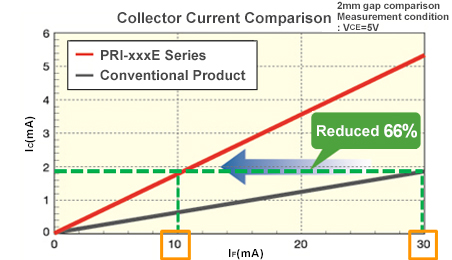Types Of Photointerrupters
The two basic types of photointerrupters are the transmissive type (gap type) and the reflective type. The transmissive type is easier to operate because all optical elements are already adjusted. A signal is generated by interrupting light by an obstacle. The reflective type must reflect light with a mirror. It's important that the mirror is positioned and aligned properly for the photointerrupter to work as intended.
Most photointerrupters have an analog output. If you have a slow signal due to the movement of your mechanics being slow, then go with a device with a digital output. You'll also get defined pulses with a digital output. Interrupters are offered in a variety of types and shapes, depending on the application. Here we will introduce a few examples.
Insertion and Surface Mount Types
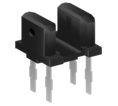
Insertion Type
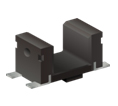
Surface Mount Type
Supports reflow mounting
Case and Molded Types
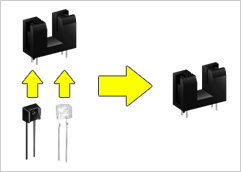
Case Type

Molded Type
With Screw and With Positioning Pins

Types that can be fixed using a screw
Fastening the screws after mounting the sub-board allow
the device to be placed in any position.

Types that fix the interrupter position using boss pins
Positioning pins increase mounting position accuracy
Snap In
The position can be fixed with a pin.
Can be used even in places without an electrical circuit by using a connector.
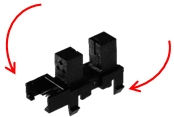
Snap in Type
No soldering required.
Using a connector makes it possible to mount in locations where it is difficult to lay out circuit patterns.
High Photoelectric Conversion Power-Saving Interrupters
By bringing the receiving sensitivity characteristics of the phototransistor close to the IrLED emission wavelength, a power-saving photointerrupter that eliminates the wavelength difference loss component is achieved.
Operating Principle

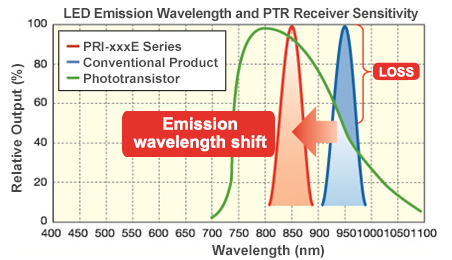
Energy-Saving Effects
